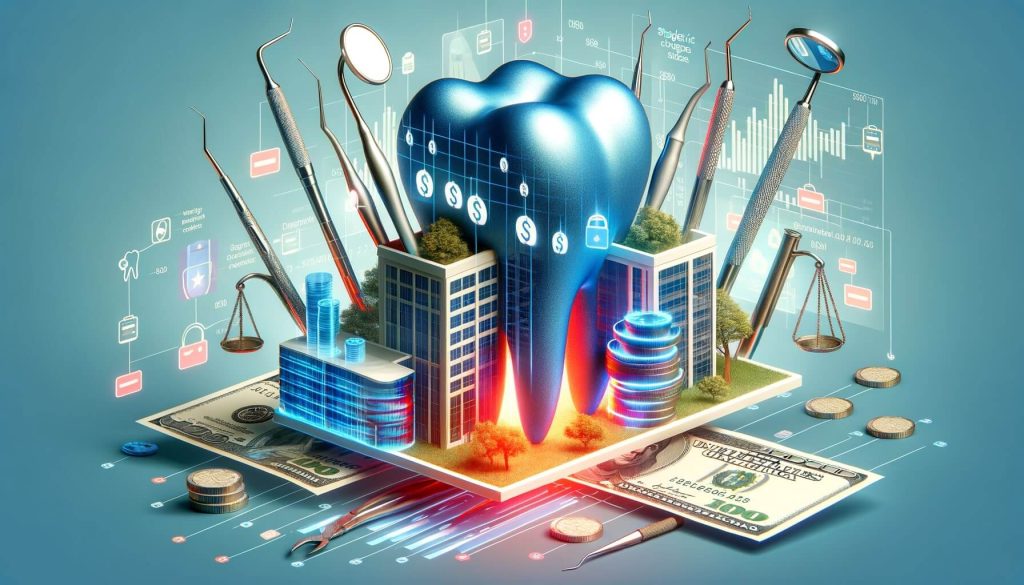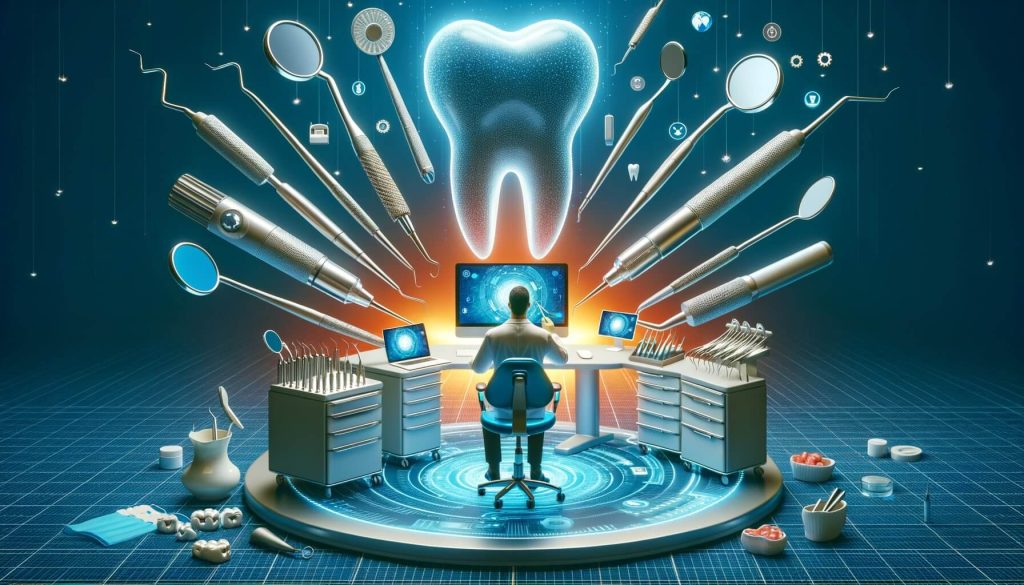Chargebacks are a common occurrence in the dental industry, especially for multi-location dental practices. A chargeback is a transaction reversal initiated by the cardholder’s bank, typically due to a dispute or fraudulent activity. When a chargeback occurs, the dental practice not only loses the revenue from the original transaction but also incurs additional fees and potential damage to its reputation.
Understanding the Causes of Chargebacks in Dental Practices
There are several reasons why chargebacks may occur in dental practices. One common cause is dissatisfaction with the services provided. Patients may dispute charges if they feel that the treatment was not performed to their satisfaction or if they believe they were overcharged. Communication breakdowns between the dental practice and the patient can also lead to chargebacks, as misunderstandings or unmet expectations can arise.
Another cause of chargebacks is fraud. Dental practices are vulnerable to fraudulent activities, such as stolen credit card information or identity theft. Fraudsters may use stolen cards to pay for dental services, and once the cardholder realizes the unauthorized charges, they initiate a chargeback.
Implementing Effective Payment Processing Systems to Minimize Chargebacks

To minimize chargebacks, multi-location dental practices should implement effective payment processing systems. This includes using secure payment gateways that comply with Payment Card Industry Data Security Standard (PCI DSS) requirements. PCI DSS ensures that sensitive cardholder data is protected during the payment process, reducing the risk of fraud and chargebacks.
Additionally, dental practices should consider implementing address verification systems (AVS) and card security codes (CVV) to verify the authenticity of the cardholder. AVS compares the billing address provided by the cardholder with the address on file with the card issuer, while CVV requires the cardholder to enter a three-digit code printed on the back of the card. These measures help prevent fraudulent transactions and reduce chargebacks.
Best Practices for Managing Chargebacks at Multi-Location Dental Practices

Managing chargebacks effectively requires a proactive approach. Here are some best practices for multi-location dental practices to minimize chargebacks:
1. Clear and Transparent Pricing: Clearly communicate the cost of services to patients before treatment. Provide detailed invoices and ensure that patients understand the charges. This reduces the likelihood of disputes and chargebacks due to misunderstandings.
2. Comprehensive Treatment Plans: Develop comprehensive treatment plans that outline the procedures, costs, and expected outcomes. Obtain patient consent and acknowledgment of the treatment plan to minimize disputes and chargebacks.
3. Effective Communication: Maintain open lines of communication with patients throughout their treatment journey. Address any concerns or issues promptly to prevent dissatisfaction and potential chargebacks.
4. Timely Refunds and Credits: If a patient requests a refund or credit, process it promptly. Delayed refunds can lead to frustration and escalate the situation, increasing the likelihood of chargebacks.
5. Documented Consent: Obtain documented consent from patients for any additional procedures or changes to the treatment plan. This helps prevent disputes and chargebacks related to unauthorized charges.
6. Staff Training: Train your staff on chargeback prevention and resolution strategies. Ensure they understand the importance of accurate documentation, effective communication, and providing exceptional customer service.
7. Dispute Resolution Process: Establish a clear process for handling disputes and chargebacks. Train staff on how to handle these situations professionally and efficiently, ensuring that all necessary documentation is provided to support the practice’s case.
8. Regular Reviews and Audits: Conduct regular reviews and audits of your payment processing systems and procedures to identify any vulnerabilities or areas for improvement. Stay updated on industry best practices and implement necessary changes to minimize chargebacks.
Training Staff to Prevent and Handle Chargebacks in Dental Practices

Staff training is crucial for preventing and handling chargebacks in dental practices. Here are some key areas to focus on when training your staff:
1. Understanding Chargebacks: Educate your staff on what chargebacks are, why they occur, and the potential impact on the practice. Ensure they understand the importance of preventing chargebacks and the role they play in the process.
2. Effective Communication: Train your staff on effective communication techniques to minimize misunderstandings and dissatisfaction. Teach them how to listen actively, address patient concerns, and manage expectations.
3. Documentation and Record-Keeping: Emphasize the importance of accurate documentation and record-keeping. Train your staff on how to document treatment plans, consent forms, and any changes or additions to the plan. This documentation can be crucial in resolving disputes and chargebacks.
4. Payment Processing Procedures: Provide comprehensive training on your payment processing procedures, including how to verify patient information, process payments securely, and handle refunds or credits. Ensure your staff is familiar with the payment gateway and any additional security measures in place.
5. Customer Service Skills: Train your staff on exceptional customer service skills. Teach them how to handle difficult situations, manage patient expectations, and resolve conflicts professionally. A positive patient experience can help prevent chargebacks.
Utilizing Technology Solutions to Reduce Chargebacks in Dental Practices

Technology solutions can play a significant role in reducing chargebacks in dental practices. Here are some technology solutions that can be implemented:
1. Secure Payment Gateways: Utilize secure payment gateways that comply with PCI DSS requirements. These gateways encrypt sensitive cardholder data, reducing the risk of fraud and chargebacks.
2. Fraud Detection Tools: Implement fraud detection tools that analyze transaction patterns and identify potentially fraudulent activities. These tools can help flag suspicious transactions and prevent chargebacks resulting from fraud.
3. Appointment Reminder Systems: Use automated appointment reminder systems to reduce no-shows and last-minute cancellations. By reminding patients of their appointments in advance, you can minimize the likelihood of disputes and chargebacks related to missed appointments.
4. Electronic Health Records (EHR): Implement EHR systems that integrate with your payment processing systems. This allows for seamless documentation and billing, reducing the risk of errors and disputes.
5. Online Patient Portals: Provide patients with online portals where they can access their treatment plans, invoices, and payment history. This transparency helps prevent misunderstandings and disputes, reducing chargebacks.
Analyzing and Monitoring Chargeback Trends in Multi-Location Dental Practices
Analyzing and monitoring chargeback trends is essential for identifying patterns and implementing preventive measures. Here are some strategies for analyzing and monitoring chargeback trends in multi-location dental practices:
1. Data Collection: Collect comprehensive data on chargebacks, including the reasons for chargebacks, the services involved, and the staff members responsible for the transactions. This data will help identify trends and areas for improvement.
2. Chargeback Reports: Generate regular chargeback reports to track the number of chargebacks, the associated costs, and the reasons behind them. Analyze these reports to identify recurring issues and implement targeted solutions.
3. Staff Feedback: Encourage staff members to provide feedback on chargeback-related issues they encounter. Their insights can help identify potential areas for improvement and highlight any training needs.
4. Patient Surveys: Conduct patient surveys to gather feedback on their experience with the practice. Include questions related to billing and payment processes to identify any areas of concern that may contribute to chargebacks.
5. Collaboration with Payment Processors: Work closely with your payment processors to analyze chargeback data and identify trends. They may have additional tools or insights that can help you reduce chargebacks.
Strategies for Resolving Chargebacks and Disputes in Dental Practices
Resolving chargebacks and disputes in dental practices requires a systematic approach. Here are some strategies to effectively handle chargebacks and disputes:
1. Review Documentation: Gather all relevant documentation, including treatment plans, consent forms, invoices, and communication records. Review these documents to ensure they support the practice’s case and provide evidence of the services provided.
2. Contact the Patient: Reach out to the patient to discuss the chargeback or dispute. Listen to their concerns and try to resolve the issue amicably. Clear communication and understanding can often lead to a resolution without escalating the situation.
3. Provide Additional Information: If the patient disputes the charge due to a misunderstanding or lack of information, provide additional documentation or clarification to address their concerns. This can help resolve the dispute and prevent further escalation.
4. Mediation: If the dispute cannot be resolved through direct communication, consider involving a mediator. A neutral third party can help facilitate a resolution and find a mutually agreeable solution.
5. Arbitration or Legal Action: In cases where the dispute cannot be resolved through mediation, arbitration or legal action may be necessary. Consult with legal professionals to determine the best course of action based on the specific circumstances.
Legal Considerations and Compliance in Dealing with Chargebacks in Dental Practices
When dealing with chargebacks, dental practices must consider legal requirements and compliance obligations. Here are some legal considerations to keep in mind:
1. Privacy Laws: Ensure that your payment processing systems and procedures comply with applicable privacy laws, such as the Health Insurance Portability and Accountability Act (HIPAA). Protect patient information and only share it as necessary to resolve chargebacks.
2. Chargeback Regulations: Familiarize yourself with the chargeback regulations set forth by the card networks, such as Visa and Mastercard. Adhere to their guidelines and timeframes for responding to chargebacks to avoid penalties or fines.
3. Contractual Obligations: Review your contracts with payment processors and understand the terms and conditions related to chargebacks. Comply with any contractual obligations and ensure that your payment processing systems align with these requirements.
4. Legal Advice: Consult with legal professionals who specialize in healthcare and payment processing to ensure that your dental practice is compliant with all relevant laws and regulations. They can provide guidance on how to handle chargebacks within the legal framework.
FAQs
Q1. What is a chargeback?
Answer: A chargeback is a transaction reversal initiated by the cardholder’s bank, typically due to a dispute or fraudulent activity. It results in the dental practice losing the revenue from the original transaction and potentially incurring additional fees.
Q2. What are the common causes of chargebacks in dental practices?
Answer: Common causes of chargebacks in dental practices include dissatisfaction with services, communication breakdowns, and fraud. Patients may dispute charges if they are unhappy with the treatment or feel they were overcharged. Fraudsters may also use stolen credit card information to pay for dental services, leading to chargebacks.
Q3. How can dental practices minimize chargebacks?
Answer: Dental practices can minimize chargebacks by implementing effective payment processing systems, training staff on chargeback prevention and resolution, and utilizing technology solutions such as secure payment gateways and fraud detection tools. Clear communication, comprehensive treatment plans, and timely refunds or credits also help prevent chargebacks.
Q4. How should dental practices handle chargebacks and disputes?
Answer: Dental practices should handle chargebacks and disputes by reviewing documentation, contacting the patient to discuss the issue, providing additional information if necessary, and considering mediation or legal action if the dispute cannot be resolved amicably. Compliance with legal requirements and contractual obligations is also crucial.
Conclusion
Managing chargebacks at multi-location dental practices requires a proactive and systematic approach. By understanding the causes of chargebacks, implementing effective payment processing systems, training staff, utilizing technology solutions, analyzing chargeback trends, and following legal considerations, dental practices can minimize chargebacks and resolve disputes efficiently. By prioritizing customer satisfaction, clear communication, and compliance, dental practices can protect their revenue, reputation, and patient relationships.
